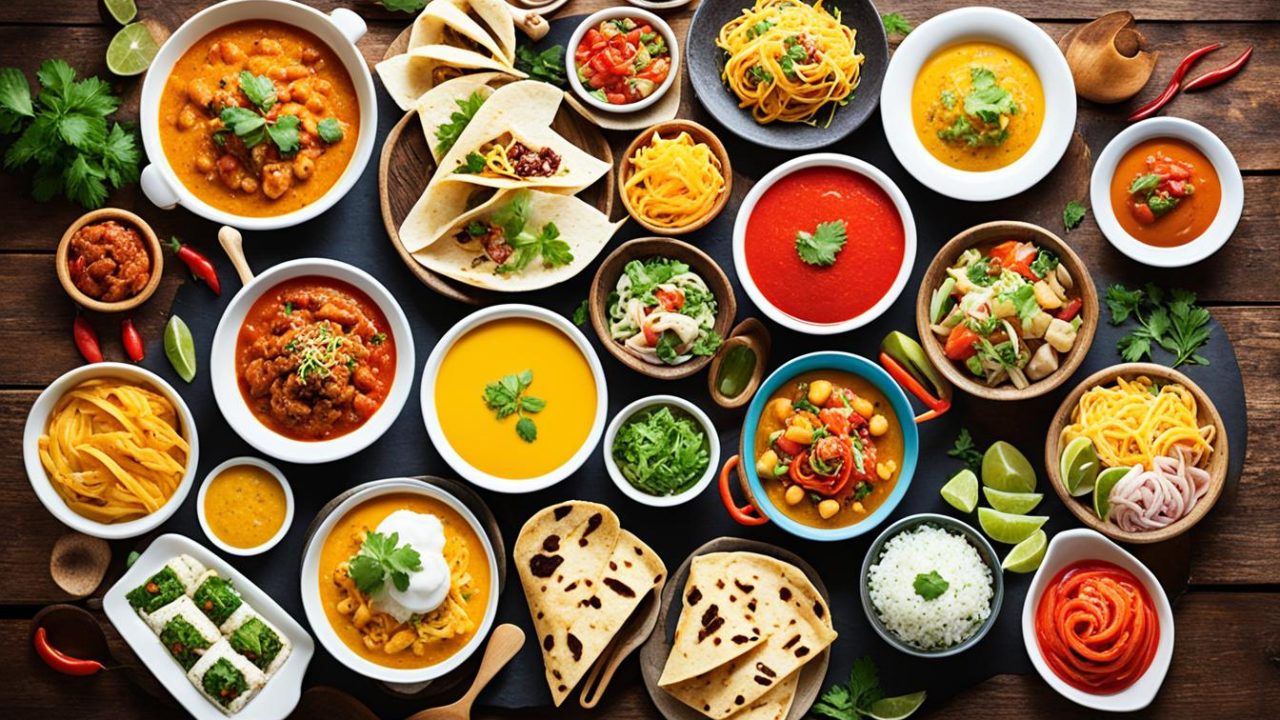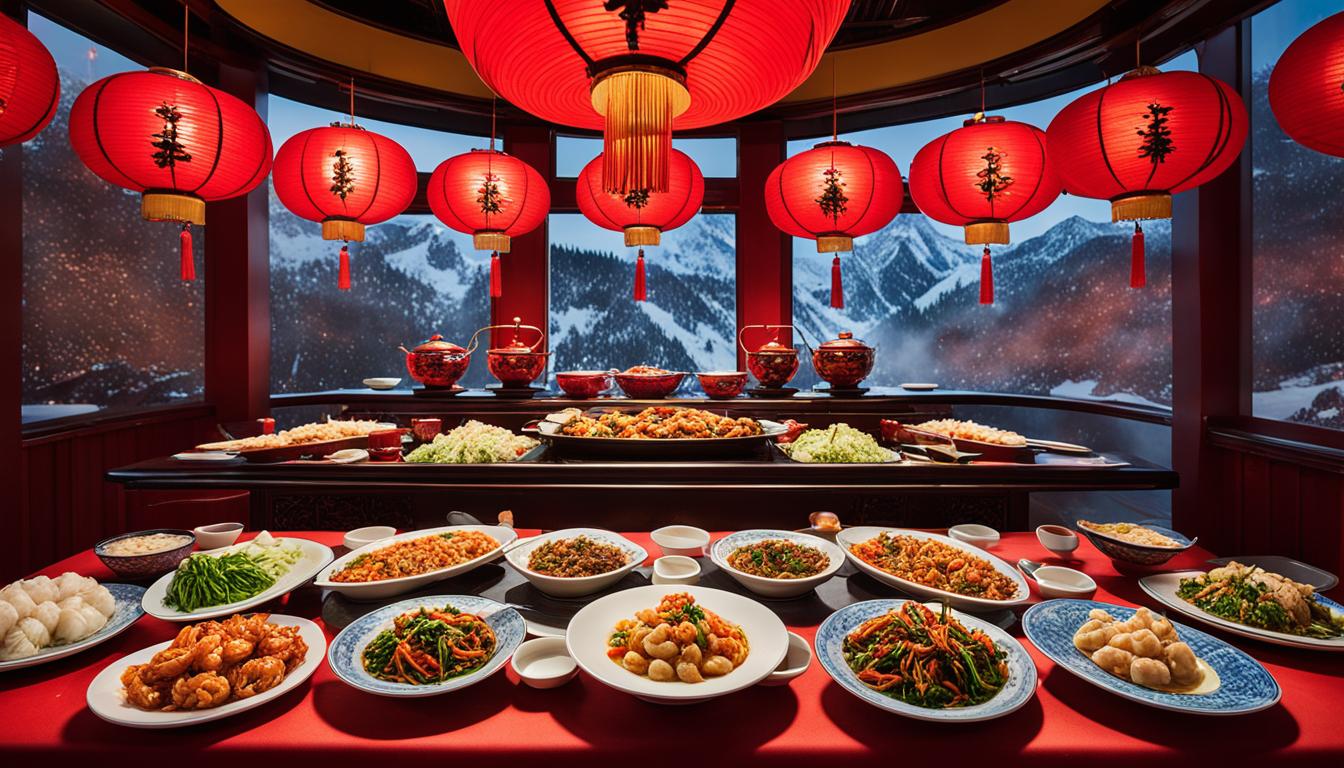Welcome to our comprehensive guide on authentic Chinese cuisine, where we invite you to embark on a culinary adventure through the flavors and traditions of one of the world’s most beloved and diverse culinary heritages. From iconic dishes to lesser-known gems, this ultimate guide will provide you with an in-depth understanding of Chinese gastronomy, allowing you to experience its vibrant tapestry of flavors right from your own kitchen.
Get ready to explore the origins, diversity, and essential ingredients and cooking techniques that make Chinese cuisine truly exceptional. Delve into the origins and remarkable diversity of Chinese culinary traditions shaped by centuries of history and regional influences. Discover the artful use of fragrant spices, aromatic herbs, and cooking techniques such as wok-frying and precise knife skills that create the complex and harmonious flavors that define authentic Chinese cooking.
No journey through authentic Chinese cuisine would be complete without immersing yourself in its iconic dishes. We’ll unravel the secrets behind the famous Peking duck, with its crispy skin and succulent meat, and introduce you to other beloved Chinese delicacies that have captivated taste buds worldwide.
Dim sum, a delightful Chinese tradition, holds a special place in the hearts of food enthusiasts globally. Uncover the history, variety, and etiquette surrounding dim sum, and savor the delicate delights of steamed dumplings and fluffy buns filled with savory treasures.
Discover how Chinese cuisine has influenced global gastronomy, from the adaptation of flavors and cooking techniques in various countries to the fusion of culinary traditions. And to truly immerse yourself in the world of authentic Chinese cuisine, we’ll provide you with a selection of recipes and recommendations, allowing you to recreate the magic of Chinese flavors in your own home.
Join us on this epicurean journey as we unveil the wonders of authentic Chinese cuisine, revealing the artistry, history, and flavors that have made it a timeless culinary treasure.
The Origins and Diversity of Authentic Chinese Cuisine
Chinese cuisine is a culinary tradition that is deeply rooted in history, with origins dating back thousands of years. It is a cuisine that has evolved and adapted over time, reflecting the diverse landscapes, cultural influences, and regional specialties of the vast country.
One of the key factors that have shaped the origins of Chinese cuisine is the agricultural heritage of the Chinese people. The rich fertile lands and favorable climate have allowed for the cultivation of a wide variety of ingredients, including rice, wheat, soybeans, and an abundance of fresh vegetables.
This abundance of ingredients, combined with the ingenuity and creativity of the people, has given rise to a diverse range of culinary styles and flavors. From the fiery and bold flavors of Sichuan cuisine to the delicate and subtle taste of Cantonese cuisine, each region of China has its own unique culinary traditions.
The diversity of Chinese cuisine is also influenced by the various ethnic groups that make up the Chinese population. The Han Chinese, who form the majority, have their own distinct regional cuisines, but there are also minority groups such as the Mongolians, Tibetans, Uighurs, and others, each with their own culinary heritage.

Chinese cuisine is not just about the flavors and ingredients; it is a reflection of the Chinese way of life, customs, and values. The importance of food in Chinese culture goes beyond sustenance; it is seen as a way to bring people together, to show respect and hospitality, and to celebrate special occasions.
As you embark on this culinary journey through the origins and diversity of authentic Chinese cuisine, prepare to be captivated by the rich history, flavors, and cultural significance that make it a truly remarkable gastronomic experience.
Essential Ingredients and Cooking Techniques
Authentic Chinese cuisine is renowned for its intricate flavors and culinary finesse. To truly appreciate and master the art of Chinese cooking, it is essential to understand the key ingredients and cooking techniques that form the foundation of this rich gastronomic tradition.
Essential Ingredients
Chinese cuisine incorporates a diverse range of ingredients, each contributing to the complex flavors and textures that define its dishes. Fragrant spices and aromatic herbs, such as Sichuan peppercorns, star anise, cinnamon, and ginger, are commonly used to infuse dishes with depth and warmth. Fresh ingredients like scallions, garlic, and shallots add pungency and aromatic notes to stir-fries, soups, and braised dishes. Additionally, condiments such as soy sauce, rice vinegar, hoisin sauce, and oyster sauce are indispensable in creating the distinct umami flavors known in Chinese cuisine.
Furthermore, Chinese cuisine showcases the use of a wide array of meats, seafood, and poultry. From succulent roast pork belly to tender stir-fried shrimp and velvety braised duck, the choice of protein in Chinese cooking is diverse and offers a multitude of flavors. Vegetables, such as bok choy, snow peas, and Chinese broccoli, are also prominent in Chinese cuisine, often prepared in stir-fries or steamed to retain their crispness and vibrant colors.
Cooking Techniques
Chinese cooking techniques are known for their precision and ability to preserve the natural flavors and textures of ingredients. Wok-frying is perhaps the most iconic technique in Chinese cuisine, providing the perfect combination of high heat and quick movements to achieve the desired smoky flavors and a distinct wok hay. Stir-frying, a subset of wok-frying, involves tossing ingredients rapidly in a hot wok to create evenly cooked, vibrant and flavorful dishes.
Besides stir-frying, steaming is another essential technique in Chinese cuisine, particularly for seafood and dim sum dishes. Steaming allows delicate ingredients to retain their natural juiciness and flavors while imparting a tender texture. Boiling, braising, and simmering are commonly used methods for creating soups, stews, and broths, with slow and gentle cooking resulting in rich and hearty flavors.
Knife skills also play a crucial role in Chinese cooking, with precise cutting techniques used to ensure ingredients are uniformly sized for even cooking. The dexterity required in preparing ingredients, such as julienning vegetables or slicing meat into thin strips, highlights the importance of knife skills in achieving the desired texture and presentation in Chinese dishes.
By understanding the essential ingredients and mastering the cooking techniques, you can embark on a culinary journey that captures the essence of authentic Chinese cuisine. With practice and an appreciation for the flavors and traditions, you’ll be able to create delicious Chinese dishes that showcase the complexity and harmony that makes this cuisine truly exceptional.
Iconic Dishes: Peking Duck and Beyond
No exploration of authentic Chinese cuisine would be complete without discussing its iconic dishes. Among these, Peking duck holds a special place as a culinary masterpiece.  This delectable dish is renowned for its meticulously prepared crispy skin and succulent meat, creating a harmonious blend of flavors and textures. Traditionally served with thin pancakes, scallions, and hoisin sauce, Peking duck offers a tantalizing dining experience that has captivated food enthusiasts worldwide.
This delectable dish is renowned for its meticulously prepared crispy skin and succulent meat, creating a harmonious blend of flavors and textures. Traditionally served with thin pancakes, scallions, and hoisin sauce, Peking duck offers a tantalizing dining experience that has captivated food enthusiasts worldwide.
In addition to Peking duck, there are numerous other beloved Chinese dishes that have become icons in their own right. From mouth-watering dim sum delights to fragrant and spicy Sichuan dishes, each iconic Chinese dish carries its unique heritage and flavors, reflecting the diverse culinary traditions found throughout China. Whether it’s the fiery heat of Mapo tofu or the delicate artistry of Xiaolongbao, these iconic dishes embody the essence of Chinese gastronomy.
Dim Sum: A Taste of Chinese Tradition
Dim sum holds a special place in Chinese cuisine as a delightful culinary tradition.
Originating from Cantonese cuisine, dim sum translates to “touch the heart” and embodies the essence of communal dining and sharing. This artful practice combines a wide range of bite-sized dishes, each bursting with unique flavors and textures.
Steamed dumplings, or “xiaolongbao”, are a hallmark of dim sum, filled with tantalizing combinations such as pork and shrimp or juicy soup. These delicate parcels of deliciousness are carefully crafted and steamed to perfection, ensuring an explosion of flavor with every bite.

Variety and Etiquette
Dim sum offers a delightful variety beyond dumplings. From savory dishes like sticky rice wrapped in lotus leaves to char siu bao, fluffy buns filled with barbecued pork, there is a dish to suit every palate.
When dining on dim sum, it is customary to share the dishes among the group, fostering a sense of togetherness and conviviality. Tea plays an integral role in the dim sum experience, with tea pouring a sign of respect and hospitality. The art of tea pouring, known as “yum cha”, is an essential aspect of enjoying dim sum.
Preserving a Culinary Heritage
Dim sum reflects the rich culinary traditions of China and the importance of gathering and connecting with loved ones over a shared meal. It embodies the values of family, tradition, and hospitality that have been cherished for generations.
As dim sum gains popularity around the world, it continues to be a symbol of Chinese culture and heritage. Whether enjoyed at a bustling dim sum restaurant or in the comfort of your own home, indulging in these delectable bites allows us to savor the essence of Chinese tradition.
The Influence of Chinese Cuisine on Global Gastronomy
Chinese cuisine has become a global sensation, captivating taste buds and shaping culinary traditions worldwide. With its rich flavors, diverse cooking techniques, and emphasis on balance and harmony, Chinese cuisine continues to be a powerful force in the world of gastronomy.
One of the key factors behind the global influence of Chinese cuisine is its long and vibrant history. Dating back thousands of years, Chinese culinary traditions have evolved and flourished, blending indigenous ingredients with influences from neighboring countries and regions.
The global influence of Chinese cuisine can be seen in the countless Chinese restaurants that have sprung up in cities around the world. These establishments not only serve authentic Chinese dishes but also adapt to local tastes and preferences, creating a fusion of flavors and culinary experiences.
Chinese ingredients and cooking techniques have also made their way into the kitchens of top chefs and home cooks alike. From using soy sauce and oyster sauce to stir-frying and steaming, elements of Chinese cuisine have become staples in many international kitchens.
The popularity of Chinese dishes such as General Tso’s Chicken, Kung Pao Chicken, and Sweet and Sour Pork further highlights the global impact of Chinese cuisine. These dishes, often tailored to suit local palates, have become synonymous with Chinese food in many parts of the world.
The versatility and adaptability of Chinese cuisine have also influenced other Asian cuisines, creating a rich tapestry of flavors and culinary innovation. From the savory flavors of Thai cuisine to the complex spice blends of Indian cuisine, Chinese culinary techniques and ingredients have left an indelible mark on these global gastronomic traditions.
The global reach of Chinese cuisine is a testament to the enduring appeal of its flavors and the art of Chinese cooking. Whether you’re enjoying a bowl of steaming hot noodles in Tokyo, savoring dim sum in San Francisco, or relishing the spicy flavors of Sichuan cuisine in Chengdu, the influence of Chinese gastronomy can be felt around the world.

Exploring Authentic Chinese Cuisine: Recipes and Recommendations
Now that we have delved into the origins, diversity, and iconic dishes of authentic Chinese cuisine, it’s time to bring the flavors of China into your own kitchen. We are excited to provide you with a handpicked selection of recipes and recommendations that will allow you to embark on your own culinary journey.
Whether you are a novice cook or a seasoned chef, there are recipes to suit every skill level and taste preference. From simple yet flavorful stir-fries to aromatic and comforting soups, these authentic Chinese dishes will transport your taste buds straight to the vibrant food markets of China.
For a taste of classic Cantonese cuisine, try your hand at making the famous Dim Sum dumplings. These bite-sized delights filled with savory fillings, such as shrimp, pork, or vegetables, are a staple in Chinese cuisine. Serve them steamed or fried, and pair them with a variety of dipping sauces for an authentic Dim Sum experience.
If you’re looking to impress your dinner guests, explore the world of extravagant Chinese banquet dishes. From the succulent flavors of Chinese-style roasted duck to the delicate balance of flavors in a traditional mapo tofu, these dishes are sure to leave a lasting impression on your guests and showcase the complexity of authentic Chinese cuisine.






